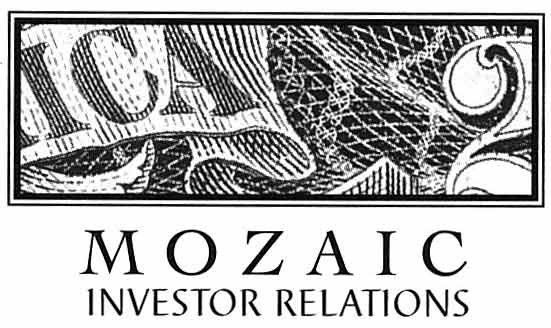Blog Layout
2023 Mid-South ACG Capital Connection returns to Louisville
Terry McWilliams • Jan 27, 2023
The Omni hosts this June 2023 capital event

Conference description prepared by Mozaic
As the host for the world's most famous horse race, the Kentucky Derby, the 1-million+ metropolis of Louisville each year shows off its successes – a vibrant bourbon distilling and tourist ecosystem, a dynamic logistics hub, thriving arts and culinary scenes and an easy paced quality of life.
The 2023 Mid-South ACG Capital Connection -- to be held June 14-16 at Omni Louisville -- highlights the region's economic progress and the opportunities ahead.
Hosted by the ACG Kentucky and ACG Tennessee chapters for more than a decade, Mid-South brings together leading private equity investors, mezzanine lenders, investment banks and M&A advisors for an investment capital event designed to fuel innovative ideas and corporate growth.
We're striving to bring the best of the Kentucky experience - and provide the value and the meaningful connections you expect. Extend your business reach with professionals from across the country also exploring the delights of what Louisville leaders have called "Possibility City."
Share
Tweet
Share
Mail
Mozaic News

By Terry McWilliams
•
01 Aug, 2022
By TERRY McWILLIAMS Want your next annual report to be horrid? Design a cover so bland, so devoid of substance that it threatens to induce reader narcolepsy. Put as many words as you can in the chairman’s message. Make the sentences really long. Say as little as possible about things that didn’t go right. At the same time, ask employees for digital photos. Their pictures are not only homespun – they’re free. If you do these things, experts say, you’ll have created a document that will have shareholders and the financial community wagging their tongues with colorful language of their own. That’s not the way it is supposed to be. Most companies spend significant amounts of money and time to create these self-administered report cards. For whatever reason -- poor planning, misguided advice or rancid execution – many publicly traded companies produce failing annual reports. All too often management falls victim to one or more of the following Seven Deadly Sins of annual reporting. Deadly Sin 1 -- Flat, uninspired writing “Our objective with this annual report is to offer you detailed information on the conduct of business and the results achieved by the company in 2002.” That’s the Chairman’s opening sentence in the Spanish utility Endesa’s annual report. It’s an example of many reports with banal chairman’s statements that lack personality and underestimate reader intelligence, says Matthew Grenier, who has analyzed reports of the top 100 European companies ranked by the Financial Times . “Sometimes the writing seems to be designed to make the reader close the annual report and walk away,” observes Rebecca McEnally, director of capital markets for CFA Institute, a non-profit organization that administers the worldwide Chartered Financial Analyst program. Long sentences and multiple dependent clauses play havoc with clarity and understanding. Sid Cato knows this first hand. His newsletter critiques annual reports and highlights trends. He penalizes reports with sentences exceeding 16 words, the length professional writers strive to achieve. Long letters also draw Cato’s wrath. He castigates the 23-page letter to Cinergy utility shareholders – a letter six to eight times the worldwide average length – as a reflection of the CEO’s “massive unbridled ego.” An annual report can be glossy, have dramatic graphics and artistic photography, “but it’s a failure if it reads terribly and the investment story lacks impact,” says Martin Hennessey, managing director of The Writer agency in London. “The truth is, a failure to invest in the words is generally a false economy.” Deadly Sin 2 - A boring cover The cover sets the stage and the tone for a company’s report. If it doesn’t lure the reader inside, it has failed. “A cover gets someone to read on, or put it down,” says Suka Design’s Susan Karlin, a New York design agency that produces both corporate and non-profit reports. A cover should grab a reader, be provocative, say something unique and reflect a strong, convincing theme – far more than a rote recitation of name and year, she says. Companies reporting a less-than-stellar year don’t necessarily have to feature “dancing and singing” on their annual report cover. “But make it interesting,” says Richard Carpenter, writing consultant and development director-corporate reporting for Radley Yeldar. Deadly Sin 3 -- Hiding the story Nothing infuriates the investment community more than hiding information or skipping around tough issues. That’s the most common mistake companies make, says the CFA’s McEnally. “It’s simply failing to provide information that people need, and obscuring critical information. Eventually investors find out, and that’s when the lawsuits start. Companies and management fare better in the long run if they are forthcoming,” she says. The European fashion company Vivat Holdings diverted attention in one risque annual report by publishing a photo of a topless woman next to its financial statements. The report didn’t set well with financial commentators or shareholders. Vivat now doesn’t exist as a publicly traded company. In such cases, management sometimes thinks “they can pull the wool over their audience’s eyes. They don’t really care what the outside world thinks,” says Hennessey. Deadly Sin 4 -- Misleading charts and graphs Figures don’t lie, but they can create the wrong impression. Bars in charts can be flip-flopped. At first glance, they can suggest fortunes are rising rather than falling. Large percentage changes can be softened or magnified by changing the starting point on the bar scale. Some companies cherry pick charts for inclusion in good years, but not in bad ones, Carpenter says. Deadly Sin 5 -- Hyperactive design (and its evil alter ego, lethargic design) Overactive design can confuse readers. With its many elements – copy, graphics, photography – competing for dominance, the eye can bounce off the page. The reader is finished trying. In one instance, Sid Cato thought his cat’s hairs had fallen onto the page of an annual he was reviewing. He quickly learned the “hairs” were designer-placed thin curved lines. He’s seen a number of annoying graphic devices – arcs, upside-down type – and yearns for designs that are “clean, inviting and user-friendly.” “Clean” doesn’t mean “bland,” as was the case for one of Gallaher Group’s annual reports and financial statements. “I know the tobacco industry is controversial, but the company’s apparent wish to avoid offending anyone has lead to one of the greyest reports ever,” says Hennessey. Orange S.A.’s report wasn't much better. Investors received a plain Word-like document, with no photos, no chairman statement, no graphs, “and no attempt made, it appears, to engage the reader,” says annual report analyst Matthew Grenier. This from Orange, he says, a “perceived leader of brand communication.” If only more companies’ reports were basic, wishes the CFA’s McEnally. “As a fundamental analyst, I would be delighted if annual reports were plain and not a lot of money was spent on glossy paper and expensive photographs,” she says. “Overdesign, underdesign – that’s a balance you have to strike,” says designer Karlin. “You want to direct the reader and not make him or her struggle. Time is limited. You want to pull them in, hook them, and provide texture to keep them.” Deadly Sin 6 –Type from Hell Poorly used typefaces can stop a reader cold. In Wallace Computer Services’ annual, Sid Cato found that white type on a silver background tended to obscure information -- “especially in a financial highlights listing showing a falloff of net income.” Many type problems occur in the footnotes. “A key problem is increasing amounts of regulation – companies are trying to squeeze additional content into the same space, keeping costs down so they don’t have to print a larger report,” says Carpenter. Thus, companies resort to tighter line spacing and smaller type. The CFA’s McEnally suggests putting narrative information into tabular form where possible. Deadly Sin 7 – Myopic use of photography Digital photography has changed the landscape, says photographer Benjamin Chapnick, president of New York-based Blackstar. Anyone and everyone with an iPhone is an expert. Because amateurs (typically employees) don’t have experience in lighting a subject, framing and composition, backgrounds, thematic development and so on, they produce digital images that are inconsistent and obtained at “no cost.” Images can be corrected to a certain extent, but the power of a professional’s trained eye can’t be replaced. Photography should advance the theme while building the corporate brand, Carpenter says. “Why skimp on doing it right? It makes the company look cheap. If that’s the image the company wants to convey, fine -- but it’s a false economy.” Sometimes purchased photography leads to problems. Designer Karlin remembers when the same stock image showed up on the annual report covers of two technology competitors. “Be original or both will look bad,” she says. A final word At best, poor reports can lose readers, experts say. At worst, they damage corporate credibility and reputation. Good or bad, the annual report look, feel and message is ultimately the CEO’s responsibility. “An annual report is the number one opportunity to really create a positioning for the company and to set itself apart” with a compelling investment story, says Debbie Mitchell, former NIRI chairman and senior managing director of IR at Dix and Eaton in Cleveland. The biggest sin may be squandering that opportunity. (Photo credit: U.S. Geological Service.)
By Terry McWilliams
•
16 Feb, 2022
I ran across this video from Seeking Alpha today and thought it provided a good explanation of the steps a company takes for an initial public offering.

15 Jul, 2020
Investor audiences, at the best of times, have a limited attention span for company presentations, says the National Investor Relations Institute. Today's new virtual world requires a much greater focus on clear, concise messaging. NIRI says to effectively engage and hold audience attention, virtual investor meetings must be developed with different mindset and new best practices. NIRI's interactive half-day live virtual workshop on Oct. 6 shows how to create a compelling investor presentation and hold a successful investor day. Winning in the New World of Virtual Presentations and Investor Days is open to NIRI members ($295) and non-members ($345). Click on the program title to visit NIRI's website. (Source: National Investor Relations Institute)

07 Jul, 2020
FINANCIAL EXECUTIVES INTERNATIONAL The term “going public” has taken on new meaning for corporate entities that have already embraced blockchain technology, as well as those that are only beginning to understand its potential benefits. Whereas in the recent past, enterprises overwhelmingly built or joined private or commissioned blockchains, today many instead are recognizing the potential value in participating in a public blockchain and are looking to “go public.” Over the past 18 months, key changes and developments in blockchain technology have elevated its profile and applicability. Early enthusiasm for blockchain use in less-than-ideal circumstances sometimes resulted in disillusionment in the technology, which persisted until users became more realistic about blockchain’s potential and focused instead on best-use scenarios. Full story
22 Jul, 2019
When shareholders -- or potential shareholders -- want to get information about a company's financial position, ask about its strategies for growth or even check out a rumor circulating on the grapevine, who can they call? For many public companies, the solution is to establish an investor relations department to provide a link with stockholders and the financial community.
"Investor relations is like public relations on financial steroids," said Terry McWilliams, president of Mozaic Investor Relations, a Louisville firm that provides investor relations services for several Louisville-area companies.

15 May, 2019
By Mary Jane Maytum
, Business First On the heels of the Enron and Worldcom debacles, with the market spiraling down, many investors are learning that what a company says or appears to say can be a far cry from the truth. But for those adventurers who wish to invest in company stocks or mutual funds of their own choosing, words can still reveal some realities if one is willing to take the time to look closely, according to local investors. "It used to be you could open an annual report and look at the auditor's letter. If there was anything wrong, the auditor would tell you. Today, you really have to do your homework," explained Terry McWilliams, president and CEO of Mozaic Investor Relations in Louisville. McWilliams, whose firm helps companies write those reports, said that the self-investor should keep in mind that a company should be viewed as a whole from its balance sheets to its leadership to its capital investments and not by words alone. "I don't think it's a word or phrase as much as it's the totality," McWilliams said. "And I think it is a gut feeling whether or not you think someone's pulling the wool over your eyes." Other investors also warned that it is wise to keep a steady hand on your portfolio and a clear head while searching for those good investments. " 'Discipline' is the word in our business to hold onto your stock even after two and a half years of low performance, to maintain your portfolio and remain diversified," said Elizabeth Stegner Peabody, president of Stegner Investment Associates Inc. Peabody noted that "diversification" is still the wisest decision an investor can make. "Even if it's a great stock, you shouldn't be more invested than 5 percent (of your portfolio). Be a bull or a bear, but don't be a pig. Don't be so enamored with a stock that it weights your portfolio." Gross, net and the bottom line But what words or terminology in a company's report might make an investor step back or go forward? Quin Bernhardt, senior financial adviser at Highland Financial Management on Bardstown Road, said that a look at earnings is a good place to begin. "I think the main thing an investor needs to look for is price per earnings and earnings per share," Bernhardt said. "As well as getting a general feel from recent news about the company." If phrases such as "price per earnings" (P/E ratio) or "earnings per share" are unfamiliar, don't fret. There are a variety of financial Web sites offering insight into terminology used by investors, according to local brokers and advisers. For example, Investorwords.com says that it offers "the biggest, best investing glossary on the Web," with a host of clear definitions and examples. One investment expert noted, however, that even the numbers can be misleading. "Cash flow analysis, P/E ratios are only as good as what goes into them," said Earl G. Winebrenner III, president of Winebrenner Capital Partners LLC in Louisville. "Accounting is an opinion, but cash is a fact. You should beware of companies that are flaunting up their earnings numbers with noncash. "For example, Enron showed gains, but they were gains only on paper. I don't care how you treat your depreciation or amortization," Winebrenner said. "You want to know the cash they started with and the cash they ended the year with." Winebrenner also recommended that while looking at a company's balance sheet, the investor should determine how much of the company's book value is goodwill, or intangible assets, such as a strong brand name. Goodwill is something that an acquiring company records as the amount paid over and above the net tangible assets of the company. "Go to the shareholders equity and look back under assets to see how much was goodwill. For example, Coca-Cola is a good thing, they have a lot of goodwill," he said. "But if a company has paid twice what an acquisition was worth, half that overpayment is going to come home to roost." Debt ratios are another cause for scrutiny. "Rules of thumb are debt loads," McWilliams said, who recommended visiting the Yahoo! Finance Web site for a list of primary ratios. "But keep in mind that a good ratio for one industry can be terrible for another," he added. "For instance, a utility company may have a large debt load because they're financing power plants over a long period of time. That's not a bad thing, but in another sector it is." Bernhardt agreed that a company's debt can be cause for concern. "Does the company have a positive cash flow? What is their leverage or indebtedness? You certainly need to look at their return on equity. Are they up to their eyeballs in debt?" Bernhardt asked. Winebrenner said a recent example of a company carrying a heavy debt load was Kindred Healthcare Inc., formerly Vencor Inc., a Louisville-based long-term acute-care hospital and nursing home company. "Vencor had a tremendous amount of debt, particularly after buying Hillhaven," Winebrenner said, regarding the September 1995 purchase of the company, which owned more than 300 nursing homes nationwide. "Their debt to equity ratio was very high," he said. "Those are the ones that have issues jumping out at you." E.J. Gary, president of First Commonwealth Capital Management Inc. in Louisville, said that a company's consistency in dividend payments also can be a factor worth examining when deciding whether to purchase stock. "Do the companies consistently pay a dividend? And increasingly people are looking at dividend income," Gary said. "In the past, people were just interested in growth. Now they're willing to take a dividend and pay taxes on it. Someone once told me that 57 percent of the worth of NYSE stocks were actually due to dividends that were reinvested." 'Dear Shareholder: It was a bad year ' While taking into account the various earnings, assets and debts of a company, McWilliams said a simple reading of the CEO's letter in an annual report also can reveal a lot about the character of a company, which may indicate its worthiness as an investment. "If you read the annual reports and all their documentation and still don't understand, run away from it," McWilliams said. A wise investor will take time to research the quality of a company's management, including a company's CEO, McWilliams said, asking the questions, "Does it have integrity; is it ethical; do they have a long career in the field?" In addition, annual reports should provide the reader an unusual amount of detail, he said. "It should be like opening festering sores," he said. "If you see them saying 'our cash flow expanded six times last year' and you look at the bottom line and there's a loss, look out." Another item to look for are "letters that are not in layman's terms but rather use obtuse industry terms that's a red flag." Other red flags are charts or graphs that fail to give a step-by-step account of the year or that cannot be easily read or understood, according to McWilliams. Honesty should be apparent. "In the long run it's best to be as transparent and open as possible, he said. "I had a client that had a horrible year, and I recommended that they say that in their annual report: 'it was a bad year.' And they did in the first paragraph of their shareholders' letter," McWilliams explained. For details on management, Winebrenner said he relies on the U.S. Securities and Exchange Commission Web site, saying "everything else is someone's opinion." "There's a lot of information there annual and quarterly reports," he said. "You can review management discussion, where management is supposed to discuss the positive and negative about the past and going forward. "Now if you're a crook, you're a crook," Winebrenner said. But some things may come out in the transaction section, such as any issues like lawsuits or interesting arrangements an investor might want to be aware of." Arrangements such as "blatant ties" between board members and management for example, relatives of company management serving on the board are definite red flags, McWilliams said. "Look for truly independent board members. Research them the same way you would management. The SEC requires 'nondependent' management. In the proxy, you can find a listing of transactions between management and directors," McWilliams said. The CEO's letter is one item that McWilliams said he "puts a lot of stock in." "I want to look at the numbers obviously," he said. "But I also want to look at what the CEO is telling you. He's going to have the decisions. He's going to have the leadership plan. I want to know: What is his map, and how is he going to get there?" Winebrenner also noted that frequent change of management could signal a red flag. When creditors speak, listen McWilliams and Winebrenner also suggest two other areas to research: a company's bond rating and senior notes. "Look and see what the bond rating agencies are doing." McWilliams said. "Moody's (Investors Service) rates bonds, but Moody's (also) looks at what the whole company is doing to see if they are stable. If it's a strong company, then they get a good bond rating." Winebrenner said a company's senior creditor or bank also can give an investor a good indication of whether the company is solvent. "If I have a company that may be in trouble, I go and see where the bonds are trading," Winebrenner said. "The stock market may be emotional, but a senior creditor is not. If they're backing out and turning everything to cash, there's trouble." In addition, Winebrenner said, "what the bank thinks of their prospects of getting paid is a good indicator." This also bears out by observing trading conditions, he said. In the face of such a magnitude of available information, novice investors easily can feel overwhelmed. Web sites, groups aid investors McWilliams suggested either seeking out an independent analyst "that doesn't do investments also" or using the resources of the National Association of Investment Clubs (http://better-investing.org). The NAIC has a local chapter and offers publications, software and groups to assist individuals with the process of analyzing companies for investing. Some people also form their own investment clubs. Matt Westfall, an attorney at Talbott & Talbott PLLC, and a few college buddies formed their own investment/social club in 1998. With a small initial contribution from each member and small monthly contributions, the club members have been gaining some firsthand market experience. "One of the first red flags in my limited experience would be 'nonrecurring expenses.' If a company says that the expense is special to this situation and that we won't see it again, that's a red flag because there's been a lot of creative bookkeeping going on that has mislabeled expenses and income," Westfall said.
On a whole, the group has given its members an opportunity to "play the market." But Westfall said he and his friends have begun to wise up after the fall of Enron and Worldcom, two companies in which they invested, though not heavily. "One of the things we try to stick with is companies we know, that are proven in the stock market GE, Procter & Gamble, some big pharmaceutical companies. We would be much more interested in a company that has a brick and mortar building, a real asset, that would hold up. And right now we take a very wary look at tech. With stocks going from $80 to $6 (per share), we probably won't be interested in tech until we've hit a bottom in the market," Westfall said. Members of the club also have realized a little more homework can go a long way. "One thing we have learned is that we need to do a whole lot more research and in-depth analysis and ask questions like, 'Why do we need to invest in another tech company, just because this expert or so-and-so's brother-in-law who's a broker says it's great?' " he said. Mary Jane Maytum is a free-lance writer for Business First. This story originally appeared in Louisville Business First.

